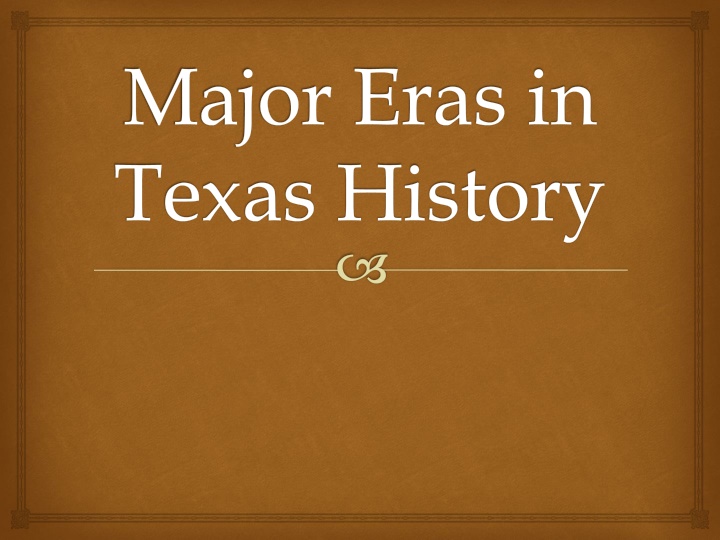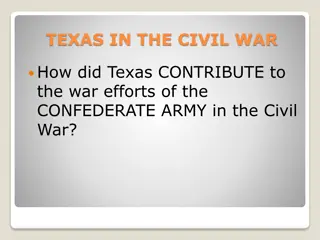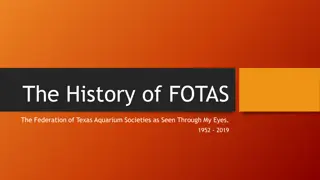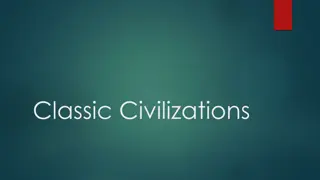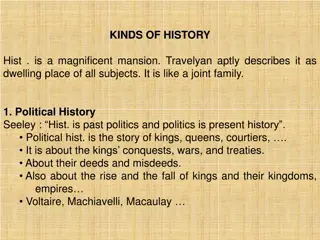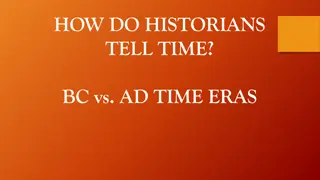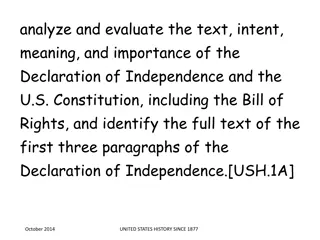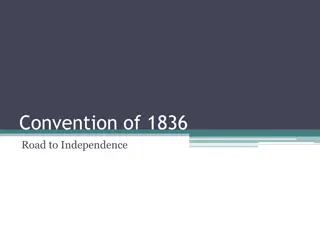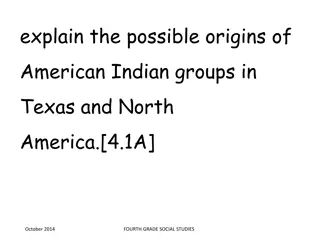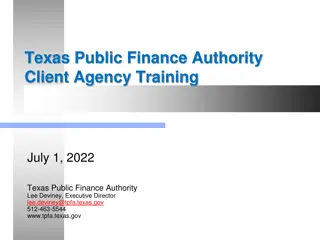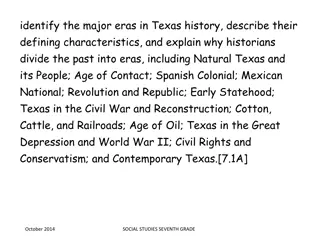Eras of Texas History
Historians divide Texas history into 12 eras to identify cause and effect in major events. The eras range from Prehistory to Early Statehood, covering the interactions between Native Americans, Europeans, and colonial powers like Spain and Mexico. Each era represents crucial developments in Texas’s journey to becoming a state of the United States.
Download Presentation

Please find below an Image/Link to download the presentation.
The content on the website is provided AS IS for your information and personal use only. It may not be sold, licensed, or shared on other websites without obtaining consent from the author.If you encounter any issues during the download, it is possible that the publisher has removed the file from their server.
You are allowed to download the files provided on this website for personal or commercial use, subject to the condition that they are used lawfully. All files are the property of their respective owners.
The content on the website is provided AS IS for your information and personal use only. It may not be sold, licensed, or shared on other websites without obtaining consent from the author.
E N D
Presentation Transcript
Major Eras in Texas History
Why Historians Divide the Past Into Eras Historians divide the past into eras so it is easier to identify cause and effect of the great events/people in history. To present there are 12 eras in Texas history
Natural Texas and Its People Prehistory - 1528 This era is the prehistory of Texas up to the point of contact with Europeans in 1528. This era includes the natural geologic history as well as Native American history.
Age of Contact 1528-1690 This era covers the interaction between European explorers and American Indians. This era covers the establishment of permanent Spanish mission in 1682-1690 This era includes the encounters of Cabeza de Vaca and the numerous expeditions over the next 150 years that define what the Europeans and American Indians understood about each other and Texas.
Spanish Colonial 1690-1821 This era deals with the efforts of Spain to bring Texas under Spanish control. The Spanish established missions, town, ranches, and military posts in South Central and East Texas. Spain s authority in Texas was challenged by American Indians, France, the United States, and Tejanos.
Mexican National 1821-1836 This era covers the efforts of Mexico to populate and retain Texas for the Republic of Mexico. To do this Mexico developed Anglo and Mexican settlements and local government institutions This eventually led to the Texas Revolution.
Revolution and Republic 1835-1845 This era deals with the Texas revolt against Mexican rule. This began with the establishment of an independent Republic of Texas. At the end of the revolution Texas became a state of the United States of America.
Early Statehood 1845-1861 This era deals with Texas annexation in 1845 and its effort to secede from the United States of America. This includes the Mexican War, resolution of the Texas boundary, dispute of part of the Compromise of 1850, significant population growth from immigration into Texas, and the involvement of the U.S. Army in frontier defense.
Civil War and Reconstruction 1861-1874 This era deals with the reason Texas succeeded from the United States This era deals with conflict while reshaping Texas following the war by the military, federal, and state government. This era deals with issues brought about by the growth of slavery in Texas and the events that impacted the Civil War on Texas This era deals with the events and actions that took place to reconstruct Texas following the Civil War.
Cotton, Cattle, and Railroads 1865-1900 This era deals with the return to cotton agriculture after the Civil War. This era covers the rise of cattle during and after reconstruction. This era shows the development of railroads and the effects that the different enterprises had on each other and on life in Texas. These industries caused expansion into West Texas which had an impact on the remaining independent Indian peoples resulting in more reservations and other interactions.
Age of Oil 1894-1935 This era deals with the vast range of oil discoveries beginning with Corsicana in 1894 through East Texas Field development. This includes major discoveries at Spindletop, the growth of Texas economic and political influence due to oil, and the effects that oil revenue had on Texas society. This era also covers the role of Texas and Texans in WWI
Texas in the Great Depression and WWII 1929-1945 This era deals with the effects of the Great Depression on Texas. This includes the efforts to improve the Texas economy, the impact of the Dust Bowl on Texas, and the economic and social changes. This era also deals with changes brought on by WWII. This includes the social changes and the role of the federal government in growing the Texas wartime economy.
Civil Rights and Conservatism 1945-1980 This era deals with the movements for social change and equality that began after WWII. This includes the efforts by Hispanics and African Americans to have equal access and treatment. This era covers the political shift away from Texans long-held allegiance to the Democratic party and became more liberal and support the Republican Party.
Contemporary Texas 1980-Present This era deals with the events and issues facing Texans from 1890 to present. This includes the role of Texas politically and economically, the impact of recent conflicts on Texas, and issues facing Texas in the present and future.
